![]() DISCHARGED INTO DEBT
DISCHARGED INTO DEBT
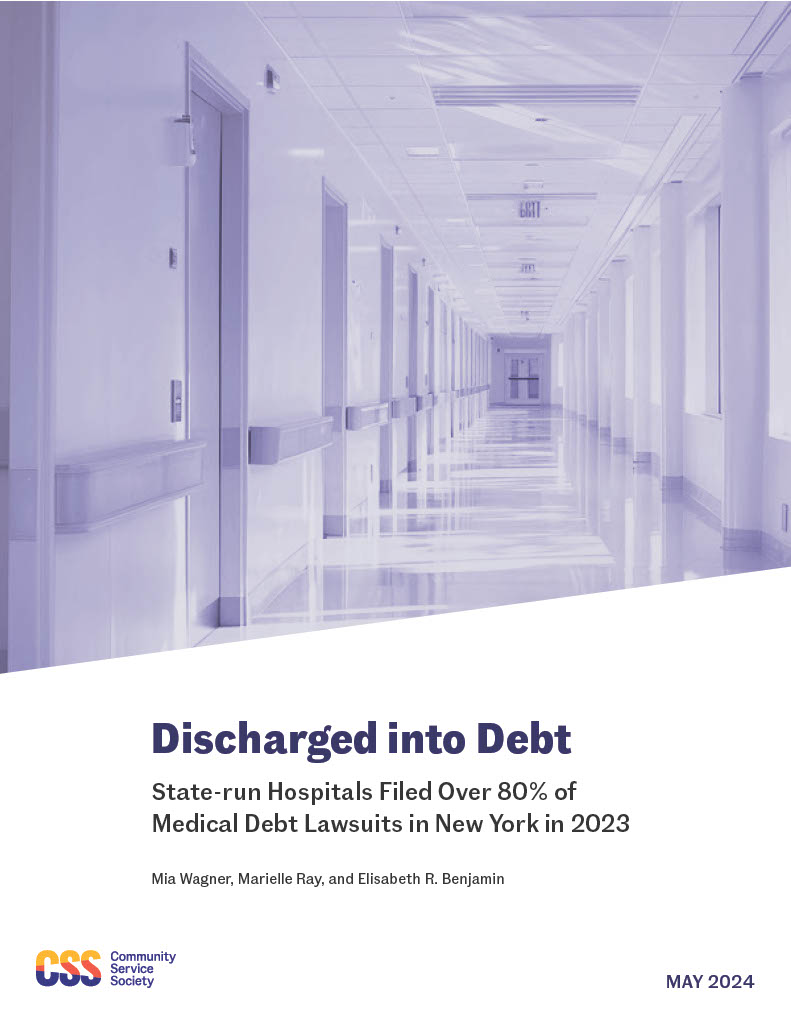 New York’s State-run hospitals have been suing hospitals patients for medical debt at a significantly higher rate than their peer public and nonprofit hospitals. In 2023, more than 8 in 10 medical debt lawsuits in New York State were filed by the five State-run facilities.
New York’s State-run hospitals have been suing hospitals patients for medical debt at a significantly higher rate than their peer public and nonprofit hospitals. In 2023, more than 8 in 10 medical debt lawsuits in New York State were filed by the five State-run facilities.
This report examines the medical debt collection practices of these hospitals, who almost always go after patients who were likely eligible for financial assistance under the State Hospital Financial Assistance Law (HFAL).
Discharged Into Debt: Hospital Profile – Upstate University Hospital
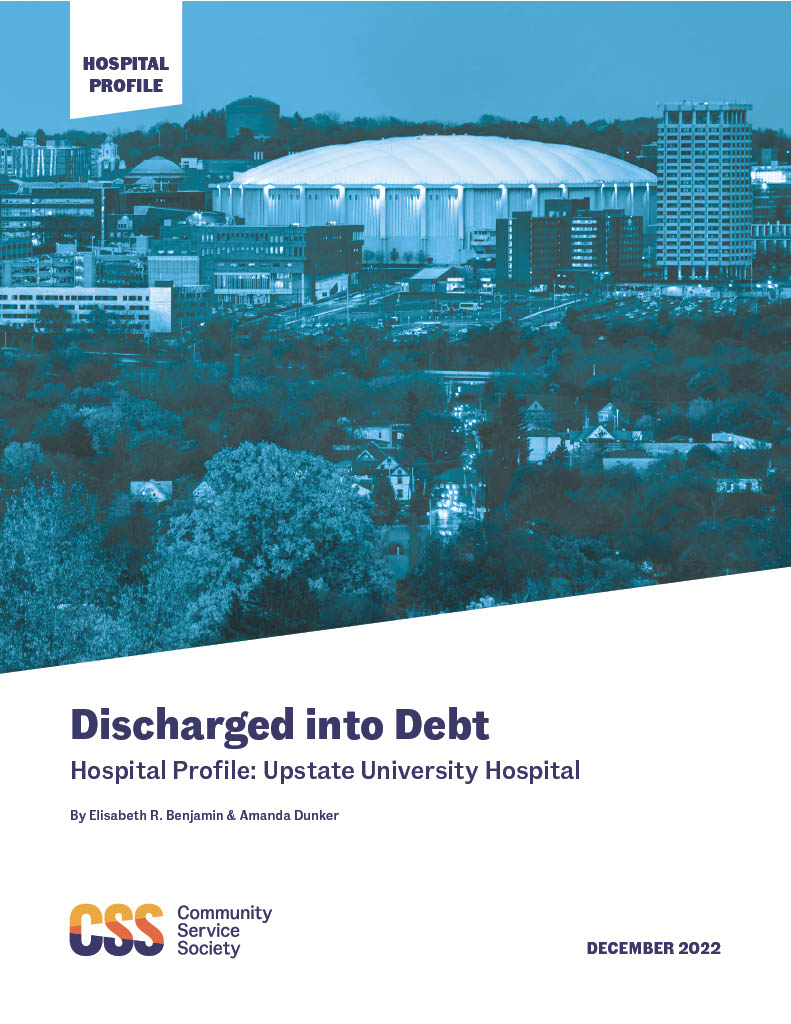 This brief describes the medical debt collection practices conducted by Upstate University Hospital (Upstate Hospital), located in Syracuse, New York. At 750 beds, it is the largest medical center in Central New York—and seeks to become even bigger by acquiring the 465 bed Crouse Hospital, located nearby.
This brief describes the medical debt collection practices conducted by Upstate University Hospital (Upstate Hospital), located in Syracuse, New York. At 750 beds, it is the largest medical center in Central New York—and seeks to become even bigger by acquiring the 465 bed Crouse Hospital, located nearby.
In October 2022, the U.S. Federal Trade Commission advised the State Department of Health (SDOH) to reject the proposed merger on the grounds that it will drive higher costs, lower quality of care, and reduce access to care and worker wages. Another consideration that the SDOH should consider is that Upstate Hospital sues more patients for medical debt than any other hospital in the state—as many as 1,500 patients a year.
Medical debt reform requires changes to New York hospital financial aid policies, report says, by Amanda D'Amrosio and Jacqueline Neber, Crain's New York
Discharged Into Debt: New York’s Nonprofit Hospitals Garnish Patients’ Wages
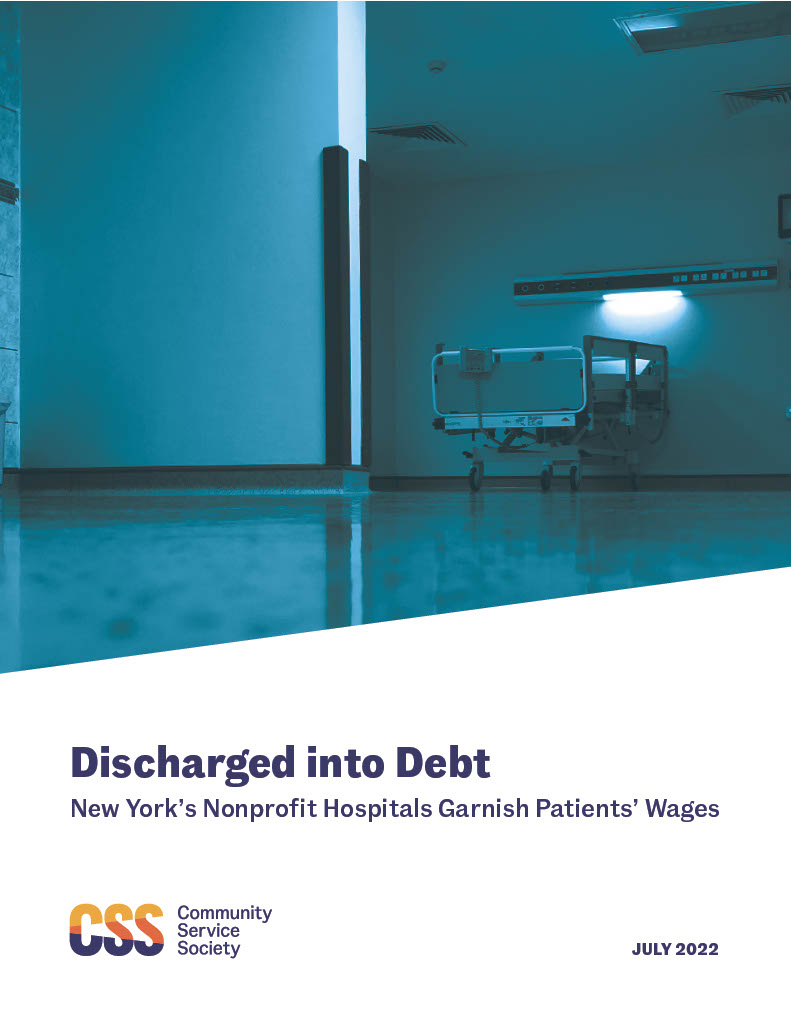 This report investigates the practice of nonprofit hospitals garnishing patients’ wages after suing them for medical debt. A random sample of 1,611 wage garnishment cases from 5 New York hospitals indicates that the indebted patients work in low-wage occupations such as health care and social services, manufacturing, and retail.
This report investigates the practice of nonprofit hospitals garnishing patients’ wages after suing them for medical debt. A random sample of 1,611 wage garnishment cases from 5 New York hospitals indicates that the indebted patients work in low-wage occupations such as health care and social services, manufacturing, and retail.
A bill recently passed in the New York State legislature (S6522A/A7363A) would ban hospitals from garnishing patients’ wages or imposing liens on their primary residence. This bill awaits Governor Hochul’s signature, and we urge her to sign it immediately.
Nonprofit New York hospitals keep suing patients for their wages. Gov. Kathy Hochul has a chance to end it, by Caroline Lewis, Gothamist
Report: Some aggressive hospitals in New York are garnishing wages of poor patients, by Susan Arbetter, Spectrum News 1
Discharged Into Debt: Nonprofit Hospitals File Liens on Patients’ Homes
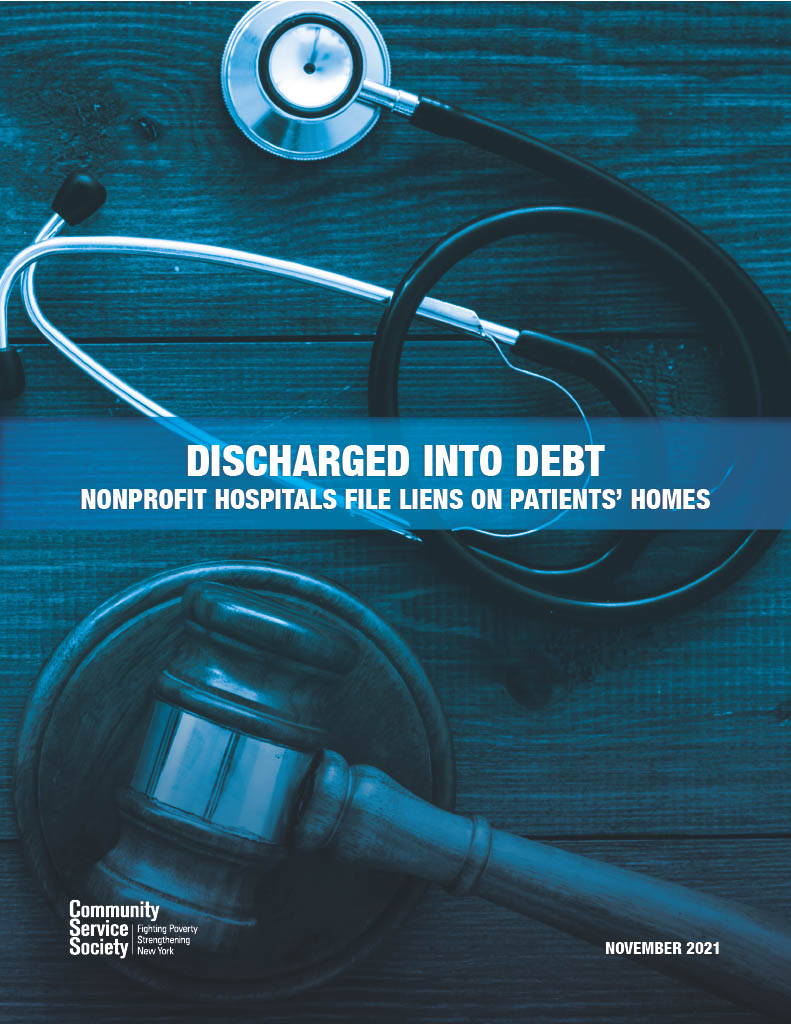 This report examines how New York’s nonprofit hospitals secure liens against patients’ homes in the wake of a medical debt judgment, jeopardizing both the physical and fiscal health of their patients. Between 2017 and 2018, 56 hospitals imposed 4,880 liens on the homes of their patients with outstanding medical bills while collecting over $442 million in state funds (called the Indigent Care Pool) to support their provision of uncompensated care.
This report examines how New York’s nonprofit hospitals secure liens against patients’ homes in the wake of a medical debt judgment, jeopardizing both the physical and fiscal health of their patients. Between 2017 and 2018, 56 hospitals imposed 4,880 liens on the homes of their patients with outstanding medical bills while collecting over $442 million in state funds (called the Indigent Care Pool) to support their provision of uncompensated care.
Research described in this report indicates that medical debt is strongly associated with housing insecurity, which in turn is related to poor health outcomes. In recognition of the importance that home ownership plays in the health and economic security of their residents, 10 states have laws that bar hospitals and other creditors from securing liens against primary residences. In New York, a bill to protect patients’ homes from aggressive medical debt collectors is pending in the state legislature (S6522/A7363)—and its passage is long overdue.
Hospitals must stop placing liens on medical debtors’ homes, by Daily News Editorial Board, NY Daily News
NY should ban liens on patients’ homes over medical debts, by Advance Media NY Editorial Board, Syracuse.com
Report: Local hospitals filed hundreds of liens on patient homes over medical debt, by Bethany Bump, Albany Times-Union
3 CNY hospitals played hardball with patients who owe money by slapping liens on their homes, by James T. Mulder, Syraucse.com
Discharged Into Debt: Medical Debt and Racial Disparities in Albany County
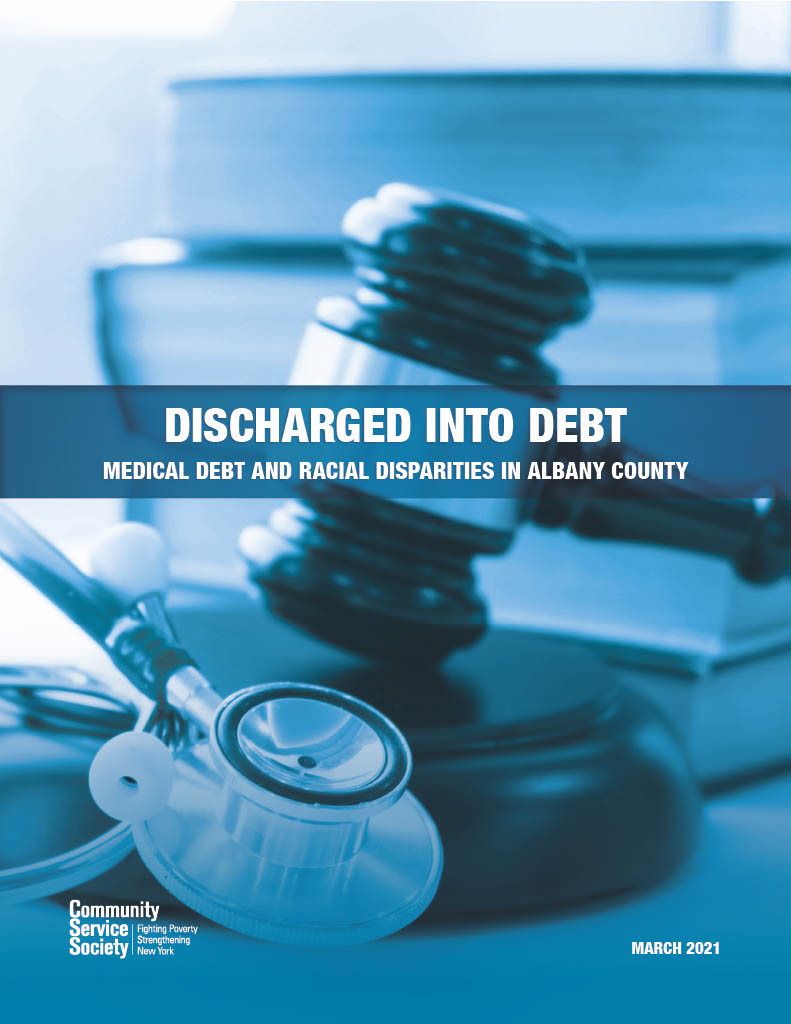 This brief examines the medical debt crisis in Albany County. Not only do 12 percent of Albany residents have delinquent medical debt on their credit reports, but there are profound racial disparities related to who is in debt. While 10 percent of white residents have medical debt, two and half times—or 26 percent—of residents of color have medical debt in Albany.
This brief examines the medical debt crisis in Albany County. Not only do 12 percent of Albany residents have delinquent medical debt on their credit reports, but there are profound racial disparities related to who is in debt. While 10 percent of white residents have medical debt, two and half times—or 26 percent—of residents of color have medical debt in Albany.Compounding the problem, Albany County is a New York State medical debt litigation hotspot. Between 2015 and 2020, five nonprofit charitable hospitals sued 2,900 Albany residents.2 Not even the once-in-a-century pandemic proved to be a deterrent.
Number of patients sued by Capital Region hospitals over unpaid bills among highest in NY, by Briana Supardi, WRBG Albany
Pandemic hasn't stopped area's hospitals from suing patients over unpaid bills, by Bethany Bump, Albany Times-Union
Pandemic hasn't stopped area's hospitals from suing patients over unpaid bills, by Katie Adams, Becker's Hospital Review
Discharged Into Debt: A Pandemic Update
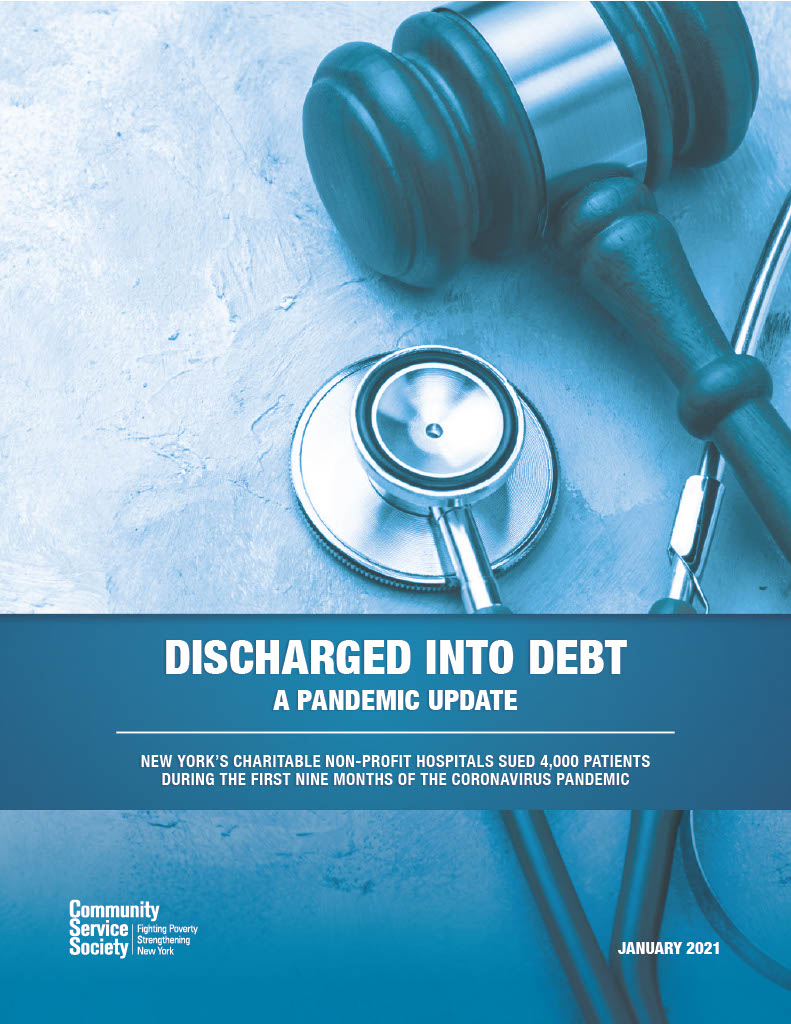 Even during the COVID-19 pandemic, many of New York’s non-profit charitable hospitals did not stop suing patients. From March to November 2020, 55 hospitals sued nearly 4,000 New Yorkers for medical debt.
Even during the COVID-19 pandemic, many of New York’s non-profit charitable hospitals did not stop suing patients. From March to November 2020, 55 hospitals sued nearly 4,000 New Yorkers for medical debt.
This brief investigates the medical debt collection practies used by these hospitals. The lawsuits were brought even though these hospitals received millions of dollars—in some cases hundreds of millions—in government funding to offset their losses during the pandemic. Litigation against patients occurred across the state, however the predominately downstate Northwell system was the most litigious.
Policymakers have several policy options at their disposal—a moratorium on all medical debt litigation and the Patient Medical Debt Protection Act—that would insulate patients from these aggressive medical debt collection practices.
Pandemic Profiteers: Hospitals Sued Patients over Medical Debt While Getting Billions in Relief Aid, Democracy Now!
One Hospital System Sued 2,500 Patients After Pandemic Hit, by Brian M. Rosenthal, The New York Times
This Week's Biggest Winners and Losers, City & State
Squawk on the Street: Michael Dowling, CNBC
Medical Debt and the Pandemic, The Brian Lehrer Show on WNYC
Breaking Down Cuomo's State of the State health care proposals, by Tim Williams, WCNY
Northwell Health Promises to Stop Suing Patients Over Unpaid Medical Bills During Pandemic, by Sydney Pereira, Gothamist
Northwell Health Says It Will Stop Suing Patients During Pandemic, by Tara Bannow, Modern Healthcare
CSSNY's Benjamin on Charitable Hospitals Suing Patients During COVID-19, by Susan Arbetter, Spectrum News
Because of Surge in Covid-19 Cases, Northwell Hits Pause on Bill Collections, by David Olson and Craig Schneider, Newsday
Northwell's 2,500 Lawsuits Against Patients Made Headlines; Hours Later, They Were Rescinded, by Alia Paavola, Becker's Hospital Review
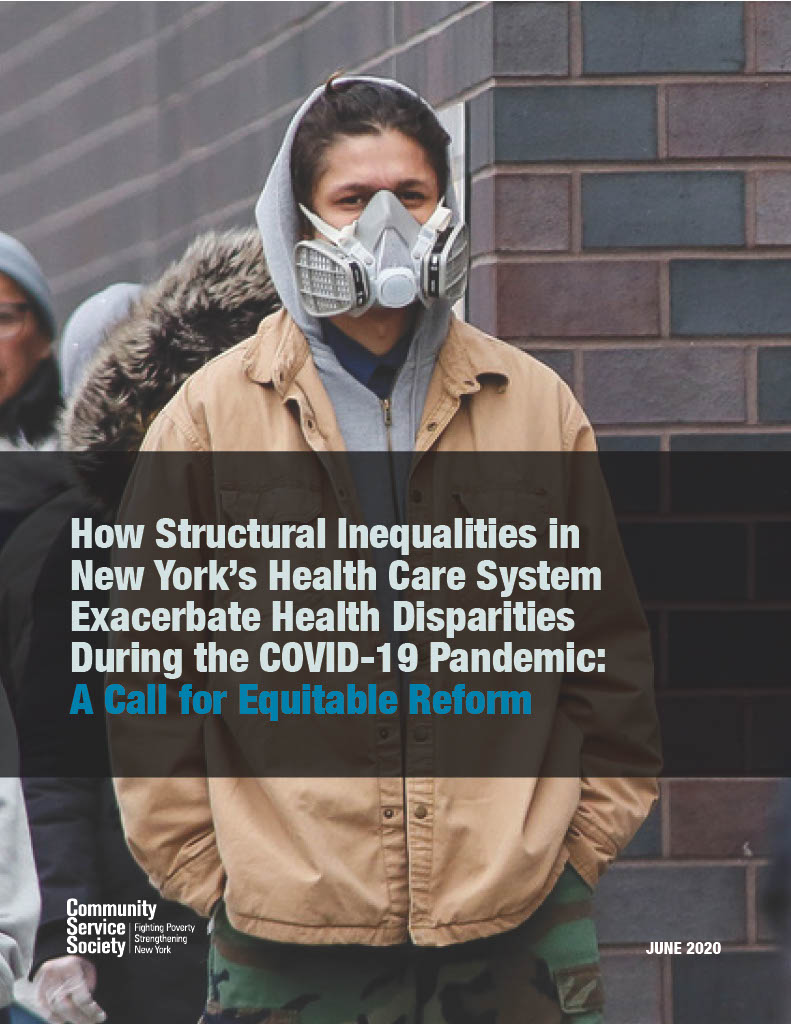 Researchers and the media have extensively documented that people of color are more likely than white people to be exposed to COVID-19, require hospitalization, and die. But few reports have illuminated the historical and structural health policy decisions that form the underpinnings of the immense disparities witnessed in New York, the epicenter of the U.S. pandemic.
This issue brief describes the cumulative impact of these decisions—particularly health policy and financing decisions in New York in the last 30 years—and proposes recommendations for addressing them moving forward.
Researchers and the media have extensively documented that people of color are more likely than white people to be exposed to COVID-19, require hospitalization, and die. But few reports have illuminated the historical and structural health policy decisions that form the underpinnings of the immense disparities witnessed in New York, the epicenter of the U.S. pandemic.
This issue brief describes the cumulative impact of these decisions—particularly health policy and financing decisions in New York in the last 30 years—and proposes recommendations for addressing them moving forward.
Discharged Into Debt: New York’s Nonprofit Hospitals Are Suing Patients
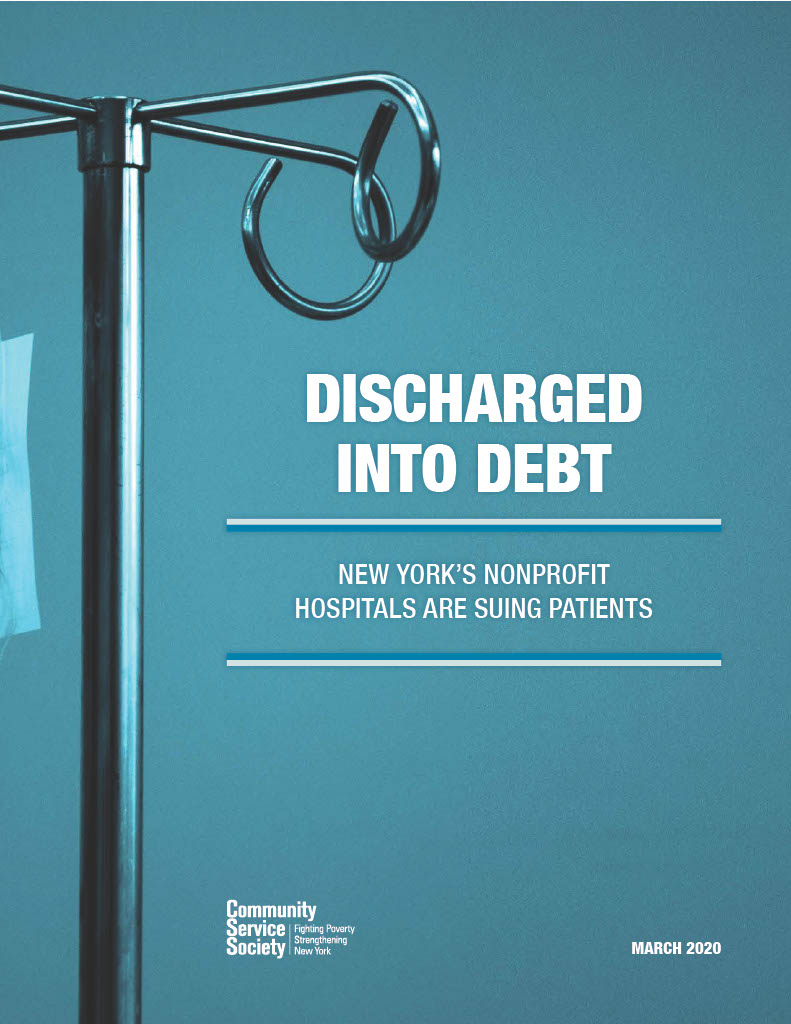 All of New York’s hospitals are nonprofit, charitable institutions. So why are they suing patients over small outstanding medical bills? In response to consumer complaints about increasingly aggressive collection practices used by nonprofit hospital systems, CSS reviewed nearly 31,000 civil cases filed against individual patients by 139 hospitals in 26 counties.
All of New York’s hospitals are nonprofit, charitable institutions. So why are they suing patients over small outstanding medical bills? In response to consumer complaints about increasingly aggressive collection practices used by nonprofit hospital systems, CSS reviewed nearly 31,000 civil cases filed against individual patients by 139 hospitals in 26 counties.
We found that the hospitals who sue the most patients provide insufficient financial assistance and rely on professional debt collection law firms to go up against patients who are largely unrepresented.


